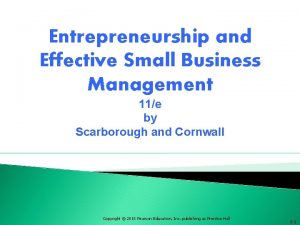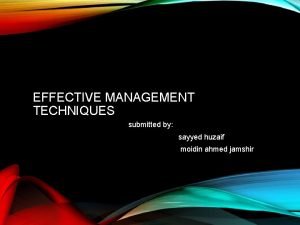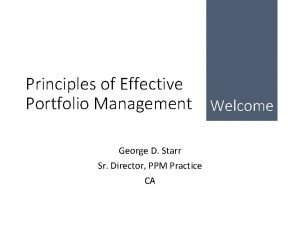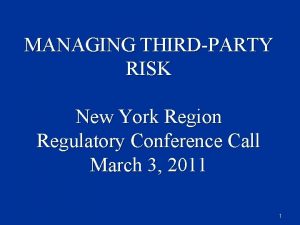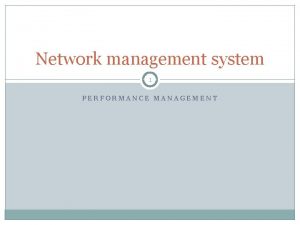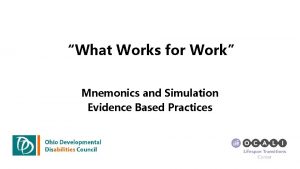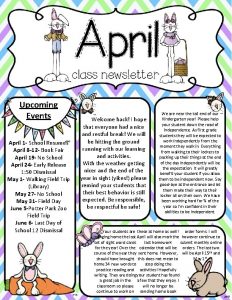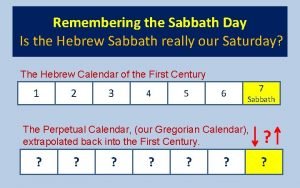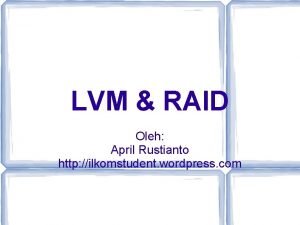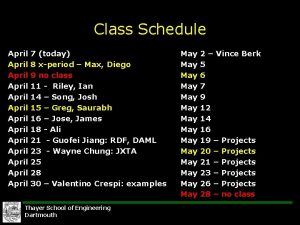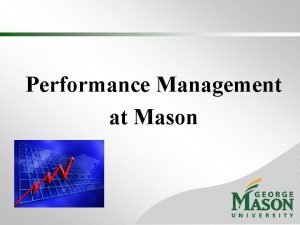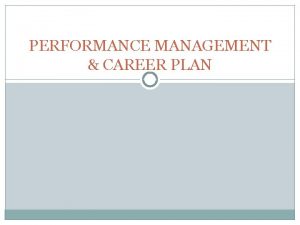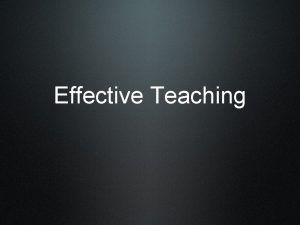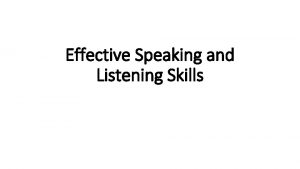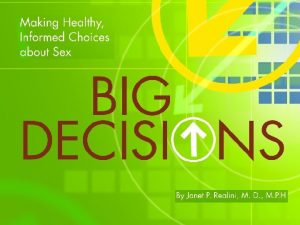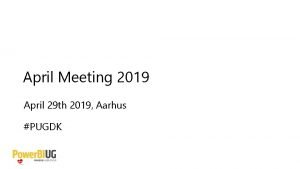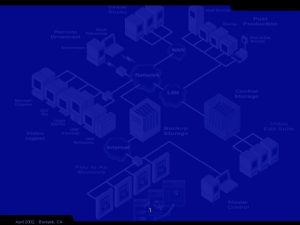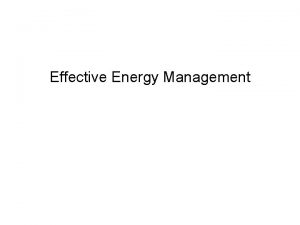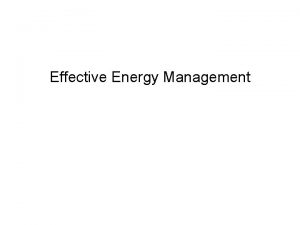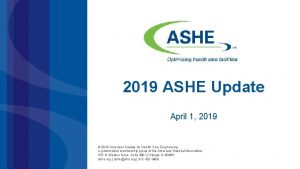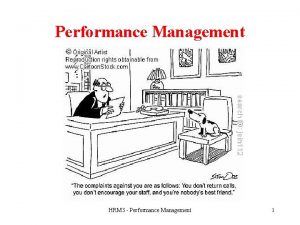Effective Performance Management April 23 2019 Performance Management


















- Slides: 18

Effective Performance Management April 23, 2019

Performance Management 1. Performance Planning • Develop, document & communicate criteria & expectations 2. Performance Feedback • Continuous activity 3. Development • Continuous actions to promote effectiveness 4. Appraisal/Evaluation • Summarize the past year’s performance

Performance Management Appraisal/ Evaluation Planning Developmen t Measureme nt Feedback

Ongoing Process • Observe and assess performance – On a regular basis – Assess against agreed upon tasks & standards – Is the right job being done in the right manner

Ongoing Process • Provide ongoing feedback – Positive and corrective – Listen to the employee – Timely and not threatening – Off course corrections

Ongoing Process • Adjust program and development activities as needed – Modifications to performance programs – Identify training & development opportunities – Engage employee in consultation

Observation and Assessment • Behavior-Based observation – Need to focus on behavior rather than nonbehavioral such as opinion or perceptions – Evaluating performance, not the person

Observation and Assessment • What are behaviors? – Actions a person takes or doesn’t take – Observable and measurable – Can be described, recorded, and discussed objectively

Observation and Assessment • What are perceptions, opinion, attitudes and traits? – Perceptions are formed by observing behavior and drawing conclusions – Attitude is a mindset, can’t directly observe attitude – Traits are generalized, lack specificity

Observation and Assessment • Why not discuss perceptions, opinion, attitude or traits? – Subjective – Cannot be observed, measured, or recorded – Tend to remain fixed even if employee changes behavior – Subject to misinterpretation – Represent what supervisors think, not observe – Employees can become defensive or emotional, may feel personally attacked

Documenting Observations Supervisors should keep records of what they have observed or has been reported to them. Records will aid in feedback conversations, and provide proof of what employee has or has not done. Important resource in writing annual evaluation or potential disciplinary actions Document, document!!

Documenting Observations Examples of useful documentation include: • Supervisor notes of observed behavior, including dates • Reports they completed • Survey responses • Feedback from constituents • Incident reports • Samples of work • Copies of counseling memos • Time and attendance records • Notes of meetings, agreements • Congratulatory letters, memos • Training certificates

Giving Feedback • Informal Feedback: simply sharing information either individually or as work group on status or progress • Positive Feedback or Praise: Praise employees on what they are doing well • Corrective Feedback: Identify problems or issues with employees, explore them, make expectations clear – done confidentially!

Behavior Based Feedback • Based on observable and measureable behavior • Behaviors can be observed, described and discussed – What was done, not why • Should include: – – – Behavior you observed Specific situation in which behavior occurred Impact behavior had on you, co-workers, etc.

Action Needed Beyond Feedback • Sometimes observations will uncover a problem that requires more than feedback. • Verbal or written counseling may be warranted – Typically conducted by supervisor – Supervisor’s Guide to Counseling • Discipline may be warranted – Must be conducted by Human Resources – Contact HR as soon as discipline is suspected or if unsure • Do not wait until the evaluation to address problems

Exercise • Star Chart • Practicing Behavior-Based Feedback • Current-Ideal Model

Conclusion • Continuous formal and informal process • Nothing in an evaluation be should be a surprise • Document, document!

Questions
 Bars rating scale
Bars rating scale Performance appraisal process
Performance appraisal process The management spectrum (3 p’s) are
The management spectrum (3 p’s) are Effective small business management
Effective small business management Portfolio selection wikipedia
Portfolio selection wikipedia Elements of effective classroom management
Elements of effective classroom management Effective management techniques
Effective management techniques Basic principles of effective portfolio management
Basic principles of effective portfolio management Third party risk management conference 2019 new york
Third party risk management conference 2019 new york Network performance management functions
Network performance management functions William shakespeare born and death
William shakespeare born and death 23. april 1616
23. april 1616 30 days has september
30 days has september April school activities
April school activities April 26 1564
April 26 1564 April savoy allstate
April savoy allstate Sabbath day calendar
Sabbath day calendar Vårmåneder
Vårmåneder April rustianto
April rustianto



